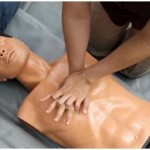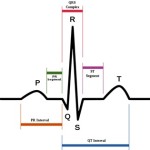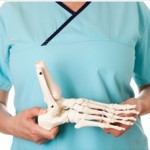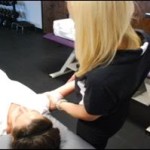Cardioversion is a procedure that can restore a fast or irregular heartbeat to a normal rhythm. This irregular heartbeat is called arrhythmia. The reason that arrhythmia occurs is to prevent your heart from pumping enough blood to your body which can raise your risk from stroke, heart attack and sudden cardiac arrest.
In order for you to understand arrhythmia first you will have to learn how the heart works. Your heart is a muscle that has an internal electrical system that controls the rate and rhythm of your heartbeat. When your heart is making its beat, an electrical signal spreads from the top of your heart to the bottom. When this signal is traveling, it causes your heart to contract and pump blood. This process repeats with each new heartbeat. When there is any kind of problems in this process, it can cause arrhythmia. 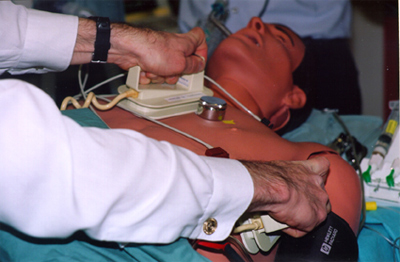 During an arrthymia, the heart can beat too fast, too slow, or with an irregular rhythm. Cardioversion is used to correct the fast and the irregular heartbeats. Cardioversion can be done in two ways:
During an arrthymia, the heart can beat too fast, too slow, or with an irregular rhythm. Cardioversion is used to correct the fast and the irregular heartbeats. Cardioversion can be done in two ways:
- Using electrical procedure
- Using medicines
Electrical procedure: your heart is given low-energy shocks to trigger a normal rhythm. The doctors are going to put to sleep before they give you the electrical shocks. This type of procedure is done in a hospital as an outpatient procedure. Outpatient means that after the procedure is done you can go home and rest.
Using medicines: These medicines are used to correct arrhythmias. This is a form of cardioversion. This type of cardioversion can be done in a hospital, home or in a doctor’s office.
<< Back to Medical Nursing Videos
Cardioversion Video
Vtach Cardioversion on EKG
Videos on this site are for
demonstration purposes only. Please do not attempt any
of the procedures seen in these videos without formal
medical education & licensing.
Cardioversion and defibrillation is not the same procedure, although the both procedures involve shocking the heart. Defibrillation is used to:
- Give high-energy shocks to the heart in order to treat very irregular and severe arrhythmias
- To restore normal heartbeats during life-threatening events, such as cardiac arrest.
How to prepare for your cardioversion?
For those patients that need a cardioversion urgently the doctor is ordering an intravenous anticoagulant therapy, such as heparin. This means that you will have a drip inserted into a vein in your hand and arm to give you the medicine.
If you have had arrhythmia more than 48 hours, than your doctor will plan your cardioversion at least three weeks in advance. In this situation you will have enough time for any medicines that your doctor will prescribe you to work properly. This includes:
- Anticoagulant medicines
- Antiarrhythmic medicines
What kind of Cardioversion tests you have to do?
- Blood tests- you have to check your blood count, kidney work and how well your blood clots
- Electrocardiogram (ECG)- the electrical activity of your heart rhythm
- Echocardiogram- an ultrasound scan, this procedure provides a clear image of your heart muscles and valves to show how well your heart is working.
- Transoesophageal echocardiogram- they use an ultrasound processor that passes through your oesophagus in order to take a scan of your heart. This procedure is performed only if you are unable to take anticoagulant medicine or if you have only developed arrhythmia within the last few days.
Cardioversion is routinely done as an outpatient or day case, under general anesthesia. General anesthesia means that you will be asleep during the procedure and you can go home the same day. You cannot eat or drink for six hour before this procedure. It is very important to follow your doctor’s advice.
What happens during cardioversion?
Cardioversion is a procedure that takes five to 10 minutes after you’re given the general anesthetic. Once you’re asleep, your doctor will give you a brief, controlled electric shock to your heart. At the same time your heart rate and rhythm are monitored and your doctor can see immediately if the procedure has reset your heart its normal rhythm. If the first attempt is unsuccessful, your doctor can give you up to two more electric shocks.
After the procedure is done you need to rest until the effects of the anesthetic have passed. Your nurse will check your heart rate and blood pressure and you will be able to go home once your heart rhythm is stable and you have fully recovered.


